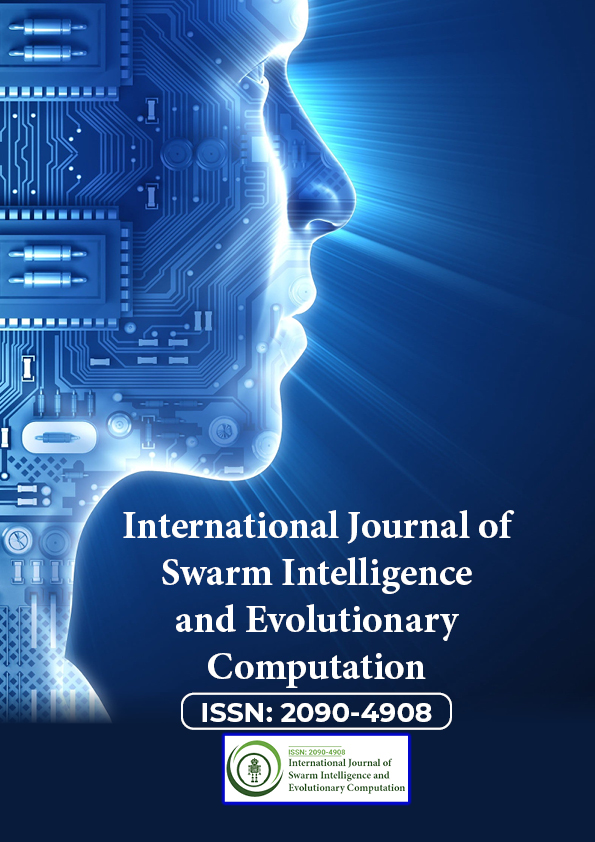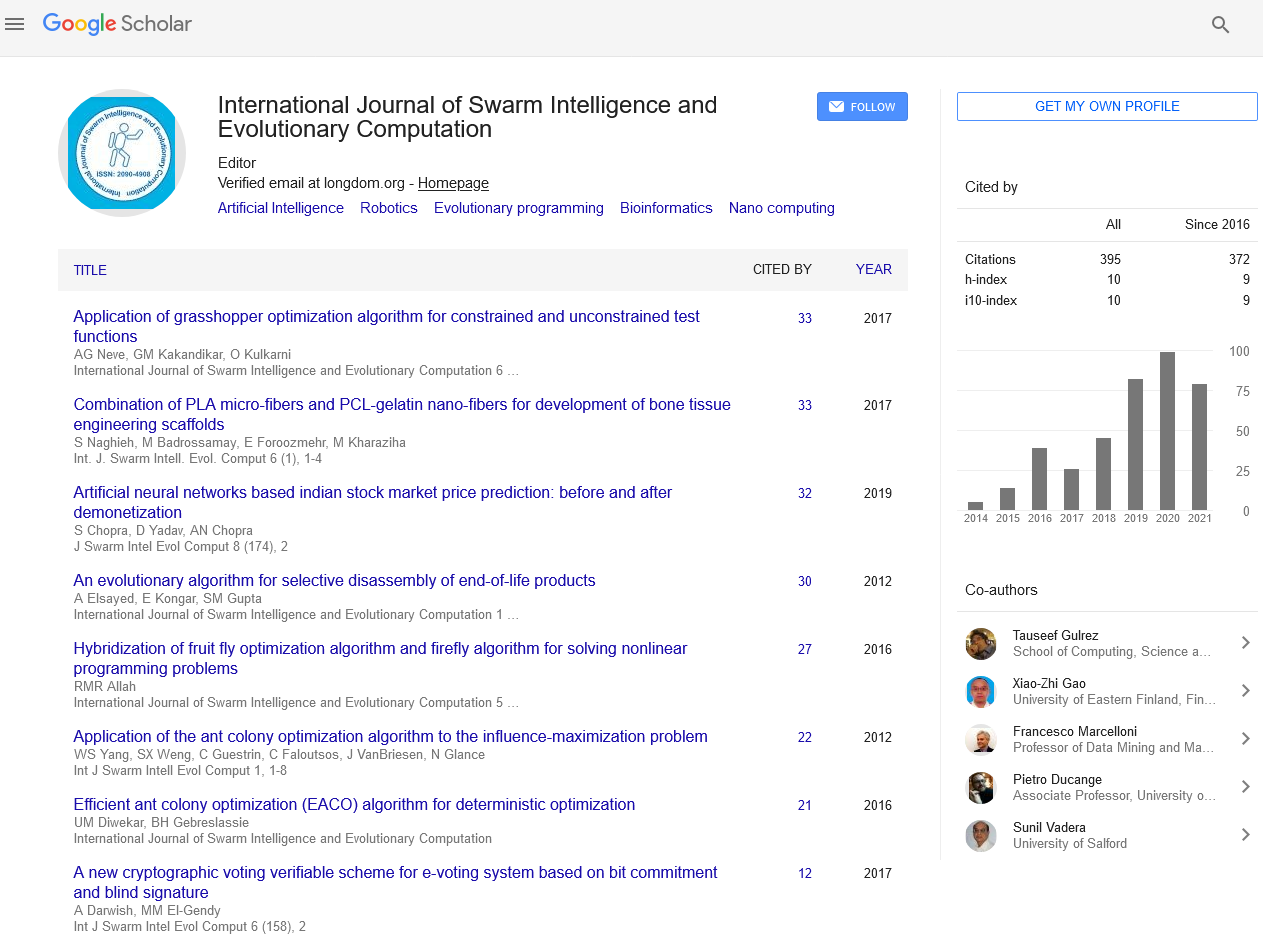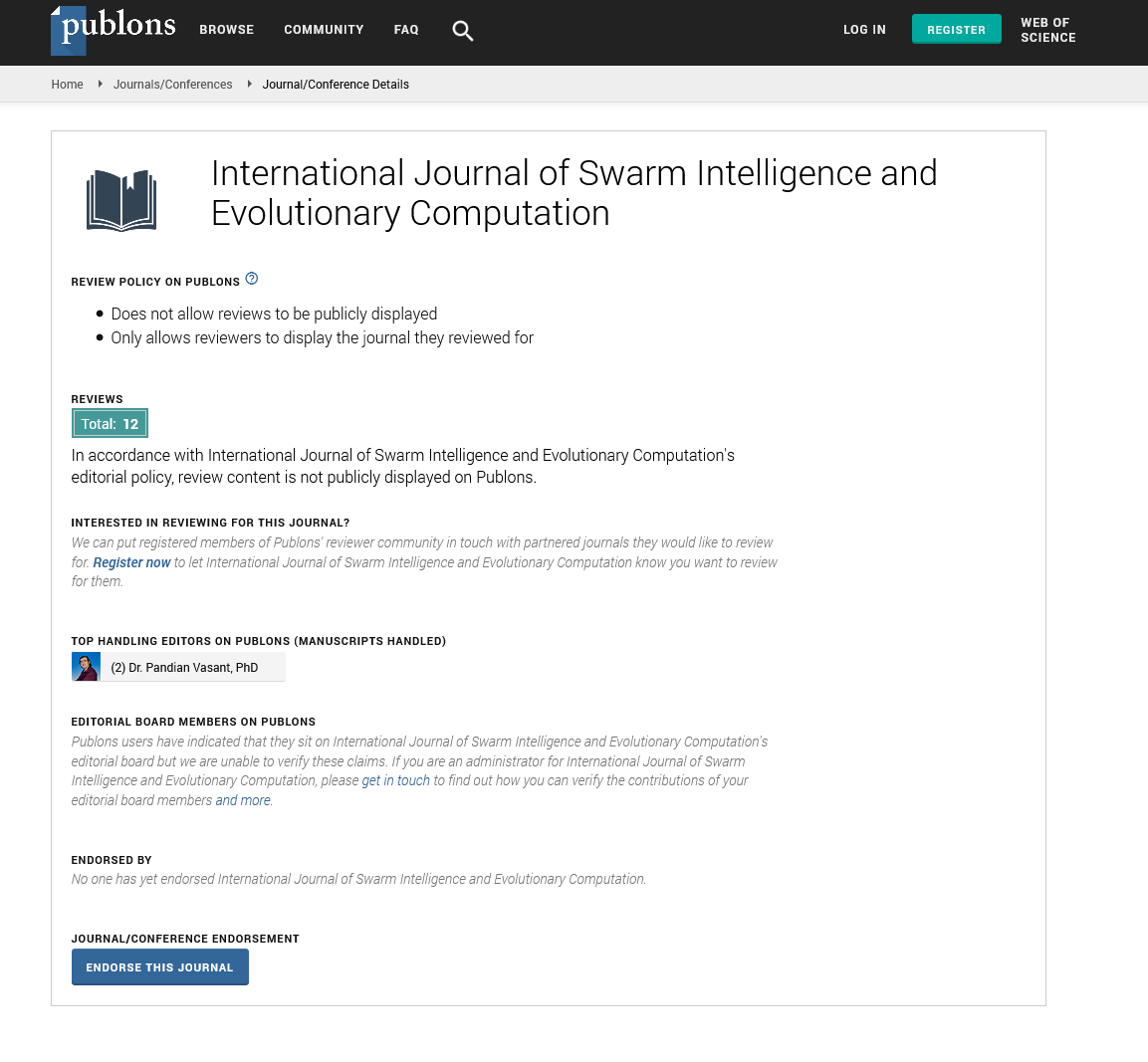Indexed In
- Genamics JournalSeek
- RefSeek
- Hamdard University
- EBSCO A-Z
- OCLC- WorldCat
- Publons
- Euro Pub
- Google Scholar
Useful Links
Share This Page
Journal Flyer

Open Access Journals
- Agri and Aquaculture
- Biochemistry
- Bioinformatics & Systems Biology
- Business & Management
- Chemistry
- Clinical Sciences
- Engineering
- Food & Nutrition
- General Science
- Genetics & Molecular Biology
- Immunology & Microbiology
- Medical Sciences
- Neuroscience & Psychology
- Nursing & Health Care
- Pharmaceutical Sciences
Perspective - (2025) Volume 14, Issue 2
The Emergence Paradigm: Swarm Intelligence as a Source of Inspiration for Novel AI Design
Ben Johansson*Received: 18-Apr-2025, Manuscript No. SIEC-25-28703; Editor assigned: 21-Apr-2025, Pre QC No. SIEC-25-28703 (PQ); Reviewed: 05-May-2025, QC No. SIEC-25-28703; Revised: 12-May-2025, Manuscript No. SIEC-25-28703 (R); Published: 19-May-2025, DOI: 10.35248/2090-4908.24.14.420
Description
Swarm Intelligence is not just a collection of algorithms but a source of inspiration for a new paradigm in Artificial Intelligence design. Emergence is the phenomenon where complex, high-level patterns arise from the interactions of simple, low-level components. This is a fundamental characteristic of swarm systems, where the collective behavior of a swarm is often far more sophisticated than the capabilities of any individual agent. Consider, for example, a flock of birds performing a complex aerial maneuver. Each bird follows simple rules, such as maintaining a certain distance from its neighbors and aligning its velocity with theirs. However, the flock as a whole exhibits a highly coordinated and intricate pattern that is not explicitly programmed into any individual bird.
This concept of emergence offers a powerful alternative to the traditional top-down approach to AI, where complex systems are designed by explicitly specifying all the rules and behaviors. In traditional AI, engineers meticulously design every aspect of a system, anticipating all possible scenarios and programming the system to respond accordingly. This approach can be cumbersome, time-consuming, and prone to failure, especially when dealing with complex and unpredictable environments. Instead of trying to engineer intelligence directly, Swarm Intelligence suggests that we can create intelligent systems by designing simple agents and defining the rules of their interactions, allowing the desired behavior to emerge spontaneously.
This emergence paradigm has the potential to revolutionize AI design in several ways. First, it can lead to the creation of more flexible and adaptive systems. Emergent systems can adapt to changing conditions without requiring explicit reprogramming, as their behavior is determined by the ongoing interactions of their components. If the environment changes, the agents can respond to these changes based on their local interaction rules, and the global behavior of the system will adapt accordingly. Second, it can simplify the design process. Instead of having to specify every detail of a complex system, designers can focus on creating simple agents and interaction rules, allowing the desired complexity to arise automatically. This can significantly reduce the time and effort required to design complex systems. Third, it can lead to the discovery of novel and unexpected solutions. Emergent systems can sometimes exhibit behaviors that were not explicitly designed or anticipated, leading to creative and innovative solutions to complex problems. The emergent behavior of a swarm can sometimes surprise even the designers, revealing unexpected and potentially valuable solutions.
One of the key advantages of swarm intelligence is its decentralized nature. In biological swarms, no single agent controls the group. Instead, global patterns emerge from the local interactions among agents. This principle has been successfully applied to AI through algorithms such as Ant Colony Optimization (ACO) and Particle Swarm Optimization (PSO). These methods are used for solving optimization problems, routing, clustering, and even robotic pathfinding. For example, in ACO, artificial ants simulate the foraging behavior of real ants to find the shortest path in a network, a technique widely used in logistics and network design.
Another significant aspect of swarm-based systems is robustness and fault tolerance. Natural swarms continue to function even if individual members fail or behave unpredictably. This concept is increasingly valuable in the design of AI systems where resilience is critical. For instance, multi-agent AI systems used in robotics and drone swarms can continue their tasks even if some agents go offline, as long as the rest of the system maintains its cooperative structure.
Swarm intelligence also promotes adaptability and learning. Unlike static rule-based systems, swarm-inspired AI can dynamically adapt to changing environments. For instance, robotic swarms can collectively explore unknown terrains or respond to dynamic obstacles using emergent behaviors derived from local rules. This adaptability is particularly relevant in applications such as autonomous vehicles, disaster response, and environmental monitoring.
Swarm Intelligence, viewed from the perspective of emergence, offers a powerful new way of thinking about AI design. By embracing the concept of emergence, we can move beyond the limitations of traditional top-down approaches and create AI systems that are more flexible, adaptive, and capable of generating novel and creative solutions. This paradigm shift has the potential to transform the way we design and build intelligent systems, leading to more robust, efficient, and innovative AI solutions.
Citation: Johansson B (2025). The Emergence Paradigm: Swarm Intelligence as a Source of Inspiration for Novel AI Design. Int J Swarm Evol Comput. 14:420.
Copyright: © 2025 Johansson B. This is an open-access article distributed under the terms of the Creative Commons Attribution License, which permits unrestricted use, distribution and reproduction in any medium, provided the original author and source are credited.


